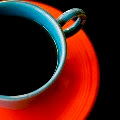 Several years ago, I climbed Mt Whitney in the High Sierras. This was not the usual walk up, but a four day early spring adventure that required heavy backpacking up to Boy Scout Lake which is a snow filled bowl surrounded on three sides by jutting peaks. From this platform, we ascended Whitney itself by heading up a long, steep shoot that is to the right of the headwall. Beyond the shoot is a small flat area that stands hundreds of feet below the summit. Here we clamped onto fixed ropes with ascenders and maneuvered our way up until we reached the actual summit. We were lucky with the weather and so stayed on top for a few hours, enjoying the panoramic views on all sides, including what might be Death Valley far off to the east.
Several years ago, I climbed Mt Whitney in the High Sierras. This was not the usual walk up, but a four day early spring adventure that required heavy backpacking up to Boy Scout Lake which is a snow filled bowl surrounded on three sides by jutting peaks. From this platform, we ascended Whitney itself by heading up a long, steep shoot that is to the right of the headwall. Beyond the shoot is a small flat area that stands hundreds of feet below the summit. Here we clamped onto fixed ropes with ascenders and maneuvered our way up until we reached the actual summit. We were lucky with the weather and so stayed on top for a few hours, enjoying the panoramic views on all sides, including what might be Death Valley far off to the east.We spent that night once again at Boy Scout Lake. In the morning we awoke before sunrise to begin the job of packing up to head down to the Portal and the road out to Lone Pine. As any mountaineer can tell you, the cold and dark world seems to awaken with the rising sun. And when the light hits the dormant grey rocks, they catch fire and become magical golden shapes that seem to dance with the new dawn.
South of our tent site stand the Needles, four sculpted spires that rise up out of the mountain massif. They appear to the eye to be four steeples of a natural cathedral standing guard against the brutal forces that are constantly besieging this huge wall.
For the most part, I was busy packing up for our departure, but at some point I looked up to see that the light had transformed the stone spires of the Needles into a luminous, serrated gold bulwark set against the deep blue of a desert morning sky.
Luckily, my camera was resting on my sleeping bag; I picked it up and without hesitation, shot four or five frames with black and white film. I wanted to catch the gold rocks, but I had run out of color film, so I had no choice but to go with what was in the camera.
The developed pictures surprised me and taught me a few photography lessons. First, light is everything. The gold that caught my eye in the picture became vibrant rock formations. If you didn’t know better, it was a picture that seemed to be in the tradition of Ansel Adams. It wasn’t, of course, but still a very fine photograph was created by the light reflecting off of the rock formations in just the right way. The truth is that the right exposure was there in front of me and I only needed to recognize it. The second thing I learned was never hesitate. A brilliant moment can vanish like the wind, leaving you with nothing but, well, a not so great picture. How can an average photographer with an inexpensive pocket camera capture an outstanding picture? I think Ken Duncan, the world renowned landscape photographer (http://www.kenduncan.com/), captures it best: He has said many times, “I am just an average photographer with a great God.”





It is so true that sometimes we limit ourselves by what we think is best but to only find that what we have and what we have to work with are the true blessings that bring us the richest experiences.
ReplyDelete